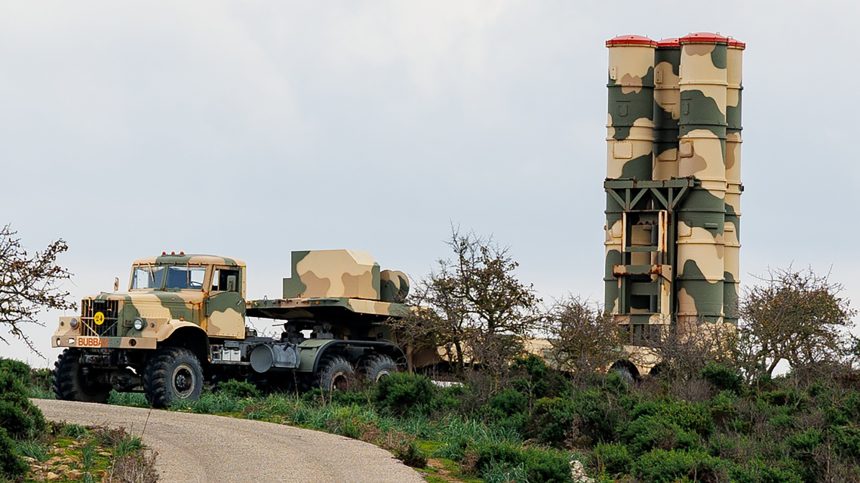We took a closer look at the Russian Pantsir, Buk, Tor, Tunguska, and S-300 replicas positioned in a high-tech range used for realistic training in contested environments.
The Poligono Interforze di Salto di Quirra (PISQ) is one of Italy’s most important military test and training facilities, and one of the most advanced in Europe. Headquartered in southeastern Sardinia, between the municipalities of Perdasdefogu and Villaputzu, the range spans approximately 120 square kilometers of mostly uninhabited and open terrain. Its geography, a flat central corridor surrounded by rugged mountains, provides a natural buffer for live-fire and experimental activities. Staffed by personnel from the Italian Air Force, Army, and Navy, PISQ supports everything from missile tests and weapon qualification trials to operational training and scientific collaboration.
We covered PISQ a few years ago, during a visit to Decimomannu Air Base, the airfield from which deployed aircraft operate inside the range. On that occasion, we had the opportunity to interview a Tornado ECR pilot, who told us:
“We take full advantage of the light conditions within the EW range, which are significantly better than those over the Pianura Padana [Po Valley], where light pollution degrades the visual environment and makes the use of night vision goggles far less effective. The PISQ is truly ‘dark’, and this allows us to prepare night SEAD scenarios that are perfectly tailored to our requirements.
Initial training for all aircrews assigned to the squadron, from arrival until they achieve Combat Readiness, as well as recurrent training for both pilots and NAVs, typically takes place at the Polygone. That range offers a wide variety of threat systems, both real and simulated, and provides immediate feedback on the effectiveness of employed tactics.
However, while the Polygone is comprehensive, the scenarios it supports are relatively basic in complexity. For more advanced training, particularly those focused on electronic warfare, we usually take part in multinational exercises such as those hosted in Israel or at Red Flag in the United States.
That said, we deploy to Decimomannu for a very specific kind of training: night SEAD missions with NVGs, which would be difficult to plan and execute elsewhere. In addition to flying within the EW ranges, we also conduct joint training missions with the Italian Army and Navy, as well as with the Air Force’s own Spada surface-to-air missile systems.”
155th Gruppo pilot, interview from 2017
Besides some domestic systems (like the SPADA), the range hosts highly realistic full-scale mockups of modern Russian-made surface-to-air missile systems. Among the systems replicated are the Pantsir-S1, Buk, Tor, Tunguska, and the S-300, all of which are known for their role in layered air defense and have seen combat use in recent conflicts.
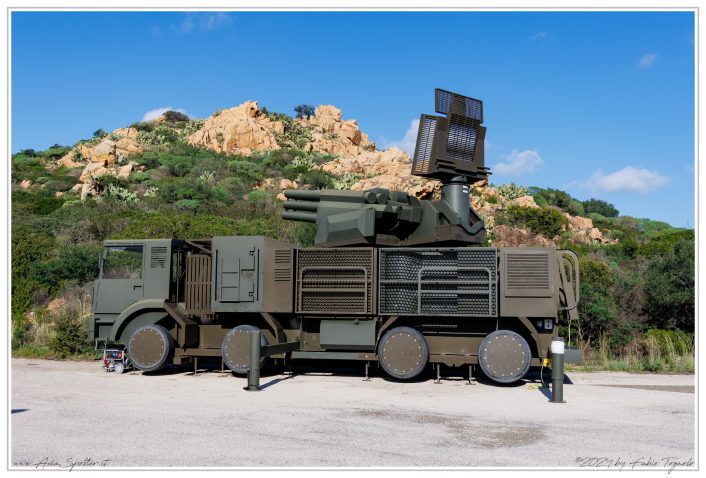
While not operational, these static replicas serve a precise and critical function: they provide Italian and allied pilots the opportunity to train against credible representations of peer and near-peer threats, enabling both visual target identification and electronic signature recognition via onboard sensors such as the Radar Warning Receiver (RWR).
The strategic placement of these decoys within the missile launch and impact sectors suggests their role in supporting live and simulated attack profiles. Pilots flying in the area can practice detecting and reacting to the types of air defense systems they may encounter in real-world missions. The mockups help bridge the gap between simulated and actual threat environments, sharpening decision-making under pressure.
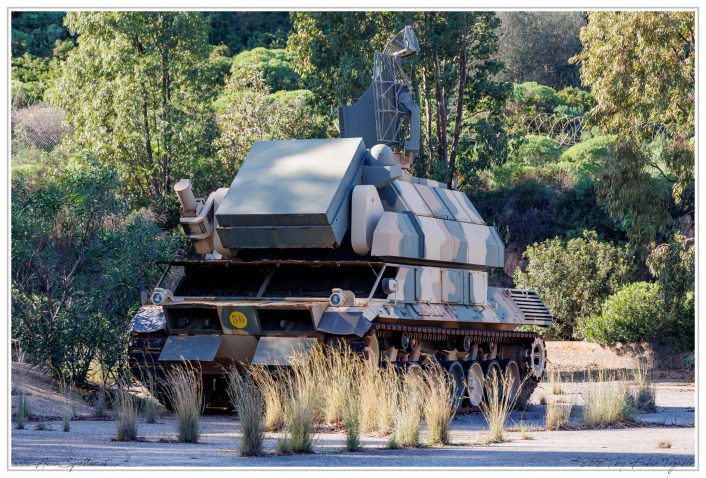
In the past, reports and satellite imagery pointed to the presence of similar mockups on U.S. test ranges, sparking discussion around their use for threat emulation and pilot training. We have also exclusively reported about the full scale replicas of Chinese jets used at various airfields across the U.S.. As explained, similarly to other mock-ups and full scale replicas, the Chinese jets are not the only threat surrogate the U.S. Marine Corps use for a more realistic training as the list of so-called HDTs (High Definition Targets) that mirror actual vehicle specifications and can be deployed at bases across the country includes also the T-72 MBT (Main Battle Tank); ZBD-97 Chinese Infantry Fighting Vehicle; as well as radars and TELs (transporter erector launchers) of various SAM systems, such as the SA-6, SA-15, SA-17, SA-19, SA-20 and SA-22.
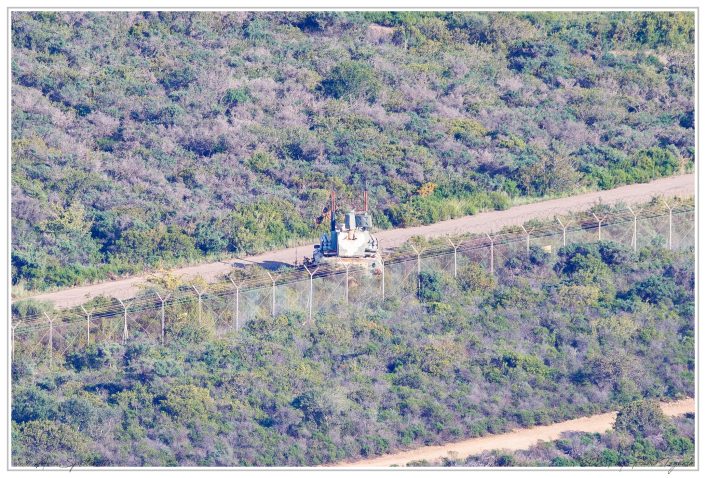
What’s particularly notable in this case is that Italy has developed and deployed these replicas domestically, showcasing a high level of realism and attention to threat representation, something that has received little attention until now. That’s why we would like to thank AviaSpotter.it and, in particular, long-time friend of The Aviationist, Fabio Tognolo, who captured detailed photographs of the systems on site, allowing us to get a closer look at the target surrogates scattered across the PISQ range.
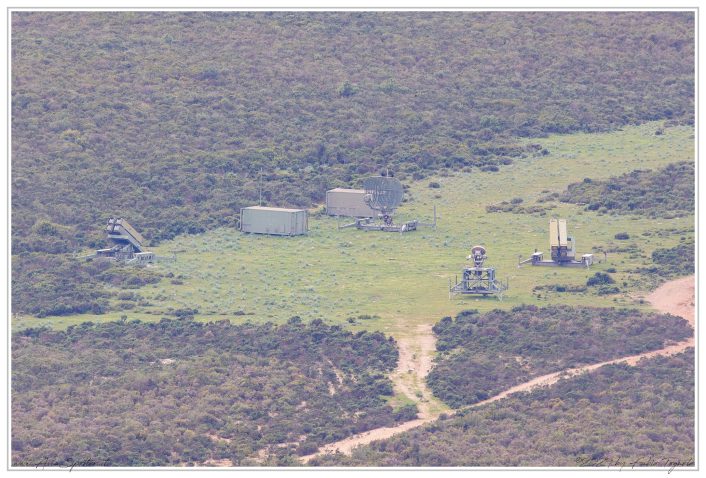
The use of full-scale decoys reflects the growing importance of multi-spectral training environments, where aircrews must learn to respond to both visual and electronic threats in complex operational contexts. It also highlights Italy’s scarcely known investment in advanced OPFOR simulation as part of its ongoing modernization of air combat training.
These mock systems play a role that extends beyond traditional target practice.
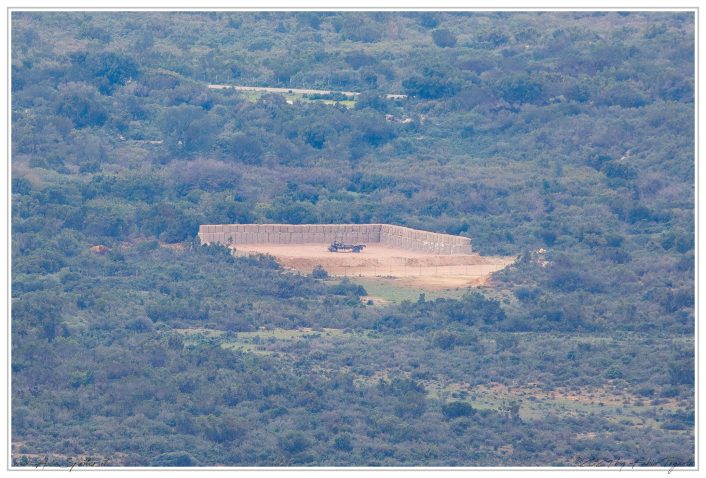
In today’s battlespace, being able to quickly recognize the silhouette of a Pantsir turret or the radar sweep of an S-300 battery could make the difference between mission success and failure. The presence of these replicas at PISQ adds yet another layer of realism to one of Europe’s premier military ranges.
A big thank you to Fabio Tognolo for the heads-up and for the great photos he shared with us. Make sure to check out the reports about PISQ and Sardinian range he posted on AviaSpotter.it here, here and here.

